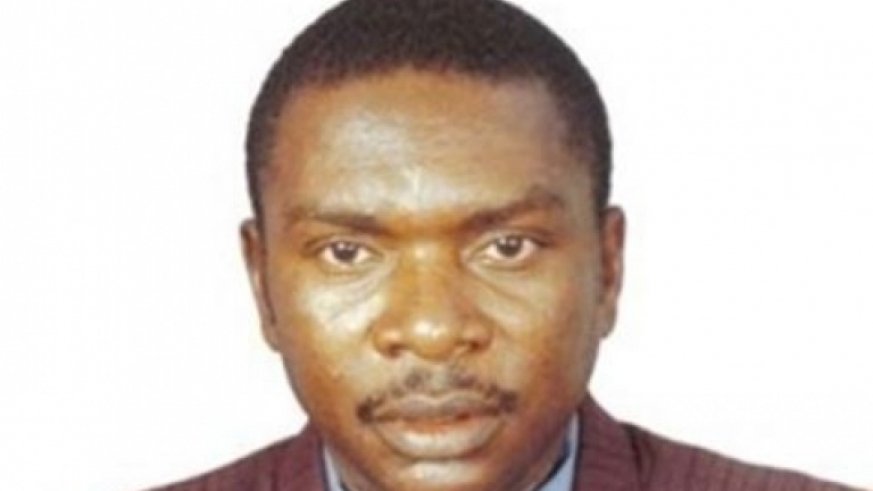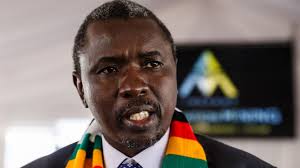Twenty-year search for Rwanda genocide suspect ends in Zimbabwe grave

Late genocide suspect Potrais Mpiranya
The 20-year manhunt for one of the world’s most brutal killers has come to a decisive end in an overgrown cemetery outside Harare.
The body of Protais Mpiranya, the former commander of the Rwandan presidential guard indicted for genocide, lay buried under a stone slab bearing a false name, which UN investigators tracked down and identified with the help of a critical lead found on a confiscated computer: the hand-drawn design for Mpiranya’s tombstone.

His body was exhumed last month at the request of UN investigators, and Mpiranya’s identity was confirmed by DNA analysis on Tuesday.
Serge Brammertz, the UN prosecutor who led the hunt, said he was the last of the major fugitives and finding his body “provides the solace of knowing that he cannot cause further harm”.
The man charged with overseeing the slaughter of thousands of Rwandans, and abetting the murder of many more, died in Harare in October 2006 of a heart attack brought on by tuberculosis, at the age of 50.
But his death, like much of his life, had been swathed in secrecy by his family and supporters. Mpiranya had been living in Zimbabwe under an assumed identity for four years, despite its government’s insistence that he was not in the country.
The investigation that followed his trail all the way to the grave in Granville cemetery on the southern edge of Harare found he had arrived on a Zimbabwean military plane and had been in frequent contact during his stay with Zimbabwean officials in the then president Robert Mugabe’s regime who were well aware of his identity as a valued ally in the second Congo war of 1998-2003.
“That the Zimbabweans, at least elements of the authorities, knew he was in Harare is obvious,” said a senior official involved in the investigation. “He was even seen meeting with Zimbabwean officials. Of course he was trying to hide his identity from the public, but the entire reason he went to Zimbabwe is because of his relationships there.”
The Guardian has asked the Zimbabwean government for comment.
As a fugitive, Mpiranya had outlasted the International Criminal Tribunal for Rwanda, established in 1994 to bring the genocidaires to justice after the genocide that killed up to 800,000 Tutsis and moderate Hutus. It had indicted him on eight counts, including genocide and crimes against humanity, but was unable to find him to make him stand trial.
After the tribunal closed in 2015, a “residual mechanism” was set up to wrap up old cases, and part of that mechanism was a small tracking team under Brammertz’s command as chief prosecutor.
At 7am on 7 February, members of the team arrived at the cemetery, where the graves were invisible beneath head-high grass. It took two and a half hours to find what they were looking for: a black headstone in memory of a Sambao Ndume whose date of birth matched Mpiranya’s, 30 May 1956.
A team member recalled the discovery of the grave: “There was that moment when my colleague called out: ‘Found it!’ And we all just stood there looking at it. It was exactly as we thought it would be,” he said. “All that hard work, the ups and the downs, it had led to this moment.”
The French inscription on the tombstone read: “Here rests forever one who loved his fatherland, his people and his family, more than his own life.” Below that, a crude depiction of a warrior with bow and arrow was carved with the message: “Dad RIP”.
The path that had led the trackers to the grave was long, convoluted and dotted with dead ends. There were supposedly eyewitness reports from across Africa from people claiming to have seen him, and until late last year the investigators believed he was probably still alive, hiding out in Zimbabwe with his fellow combatants from the Congo war.
By May 2020, Mpiranya was the last major fugitive among the 93 accused indicted by the ICTR, and the most wanted war crimes suspect in the world.
As head of the Rwandan presidential guard in 1994, according to his indictment, he had given his men a kill list of prominent Tutsis and orders to kill their families too. He armed and trained the notorious Interahamwe Hutu militia, responsible for hundreds of thousands of deaths.
And with the signal for the bloodletting to begin, the shooting down of the plane carrying the country’s president, Juvénal Habyarimana, on 5 April 1994, he sent his men to set up roadblocks at which Tutsis were massacred.
Soldiers from the presidential guard murdered the prime minister Agathe Uwilingiyimana, a moderate Hutu, and mutilated her body. The 10 lightly armed Belgian soldiers who had been sent to protect her were shot and hacked to death with machetes.
After the fall of the Hutu regime in July 1994, Mpiranya fled across Africa, spending four years in Cameroon until it became inhospitable for genocidaire fugitives. He moved on to the Democratic Republic of Congo (DRC), fighting with Hutu forces and Zimbabwean troops on behalf of the country’s president Laurent Kabila, against the Rwandan army, in what became known as the second Congo war.

Zimbabwean officers saw the former commander as a cut above most of the Congolese troops they were fighting alongside .
“He developed a lot of relationships with these guys during the war,” a senior official in the prosecutor’s office said. “They respected him. He was a good commander, a professional, someone who listened, asked questions and took decisions. He was very security conscious. So he impressed the Zimbabweans when others they were working with did not.”
So when Mpiranya was first indicted in September 2002, his friends and admirers in Zimbabwe helped spirit him across borders. According to witnesses, he flew from Mbuji-Mayi in central DRC to Harare on a Zimbabwean military plane.
Mpiranya brought a small entourage of Hutu commanders with him and, using a fake identity, set up a small transport business with two large vans, bought most likely with proceeds from Congolese diamonds.
He was better at giving orders than doing business. The venture floundered, and over the four years in Zimbabwe, Mpiranya’s standard of living crumbled. Starting off in a substantial villa in the first year, the family had to downgrade to an apartment in the same area and then another in a more down-at-heel neighbourhood.
They stopped hiring conductors for the buses and a family member had to do the work themselves. Then both buses were in accidents and there was no money to repair them. Much of the rest of his assets were wiped out by Zimbabwean high inflation in those years.
When Mpiranya fell sick with tuberculosis, he had no money left to pay for his medical care and his wife in the UK had to take on more work to send funds. Filling in the forms for hospital admission, he used a new identity, Sambao Ndume, the name he would be buried under.
The UN investigators believe his family and friends covered up the death so as not to dent morale among the Hutu forces in DRC – and so as not to expose themselves to scrutiny. The tracking team found several had secured safe haven in the UK and EU with bogus asylum claims.
The tribunal tracking team spent the time chasing wispy leads around Africa, provided by informants either seeking to cover up Mpiranya’s death, or looking to make money, or both.“The family and his associates deliberately concealed for the last two decades his presence in Harare and his death,” Brammertz told the Guardian. “The investigative file was filled with information that he was quite active, with businesses and associates in several countries. My predecessors, and perhaps even myself at the beginning, focused more on those leads.”
Over the past few years, the tracking team went back over the entire investigation, reviewing the databases, interviewing and re-interviewing witnesses, stripping out tips and speculation, and the investigators’ own possible bias, back to the last fact in Mpiranya’s life they knew for sure: he was in the DRC in 2002. They reconstructed every known detail of his life, his mindset and connections.
The breakthrough came last September with the seizure of a computer and other material in a raid in a European country (which the Guardian is not allowed to identify).
Combing through a mass of data, they came across emails with veiled references to “the one who has a passed” and the “old man”. Then they cross-checked with the travel of some of Mpiranya’s relatives, from visa stamps sent by partner governments, and found them converging on Zimbabwe in October 2006.
Sifting through hundreds of digital pictures, they found photos of a funeral including those of the body laid out for the mourners. It looked like Mpiranya and was dressed in a suit that the investigators later found in the grave.
Finally, they found the photo of a hand-drawn picture of a gravestone, sent by a close relative, and realised it was a commission for the stone carvers of Harare. If they could find a stone like that, they could find the body.
After years of stalling the search, the Zimbabwean authorities agreed to allow the body of the man calling himself Sambao Ndume to be dug up. On 27 April, the trackers, a UN pathologist, and three Zimbabwean detectives gathered at the grave as the sun rose.
About 20 riot police had been sent along as well, torpedoing any hopes that it could be done quietly. The conspicuous police presence drew a small crowd of curious local residents.
The gravediggers worked their way down to the coffin with spades, and then the pathologist took over, climbing down into the grave to take a careful sample, without disturbing the rest of the body, with a deference Mpiranya had not accorded to his multitude of victims.
Prosecutors are still looking for five more indictees, and Brammertz believes the discovery of Mpiranya’s body will increase the pressure on the governments of other countries, where the last ageing fugitives are thought to be hiding. But Mpiranya was the last of the main figures of the Rwandan genocide to be accounted for, although he had succeeded in avoiding a trial.
“Of course the goal is to arrest fugitives,” Brammertz said. “But we need to account for them, one way or the other. First, because as they say themselves, survivors and victims want a final answer.
“And second, to say this person is dead means they can’t cause further harm, and they aren’t living this nice life as a fugitive somewhere while the victims try to rebuild their lives.
“And, of course, for the UN and our mandate,” he added, “we have to demonstrate our determination and that we go all the way.”
Source – The Guardian







